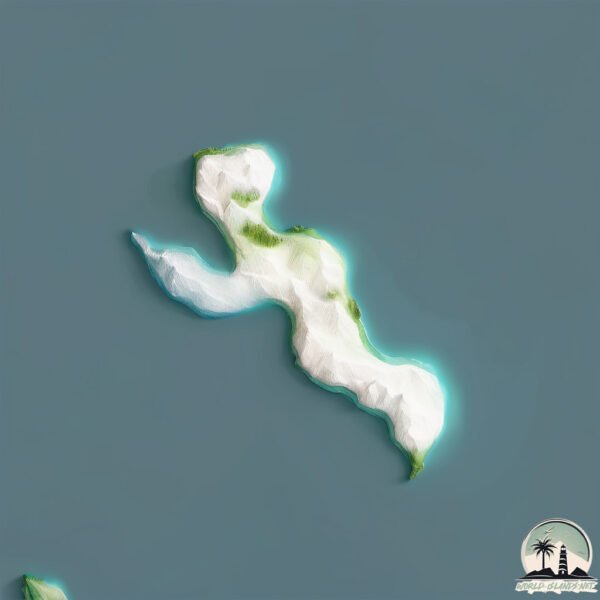Welcome to Damas , a Dry island in the South Pacific Ocean, part of the majestic Pacific Ocean. This guide offers a comprehensive overview of what makes Damas unique – from its geography and climate to its population, infrastructure, and beyond. Dive into the details:
Geography and size of Damas
Size: 0.639 km²Coastline: 6 kmOcean: Pacific OceanSea: South Pacific OceanContinent: South America
Damas is a Tiny Island spanning 0.639 km² with a coastline of 6 km.
Archipel: –
Tectonic Plate: South America – A major plate covering the South American continent and part of the Atlantic Ocean, known for the Andes mountain range and significant seismic and volcanic activity.
The geographic heart of the island is pinpointed at these coordinates:
Climate and weather of Damas
Climate Zone: DryClimate Details: Cold Desert ClimateTemperature: Cold
Climate Characteristics: Similar in dryness to hot deserts but with cold winters. Days can be warm or hot, while nights are typically chilly with common frost occurrences.
Topography and nature of Damas
Timezone: UTC-04:00Timezone places: America/La_PazMax. Elevation: 0 m Mean Elevation: -5 mVegetation: ShrublandTree Coverage: 32%
The mean elevation is -5 m. The highest elevation on the island reaches approximately 0 meters above sea level. The island is characterized by Plains: Flat, low-lying lands characterized by a maximum elevation of up to 200 meters. On islands, plains are typically coastal lowlands or central flat areas.
Dominating Vegetation: Shrubland
Vegetation: 1 vegetation zones – Minimal Diversity Island
Infrastructure and Travelling to Damas
Does the island have a public airport? no .
Does the island have a major port? no .
The mean population of Damas is 1 per km². Damas is Gently Populated. The island belongs to Chile .
Continuing your journey, Santa Maria is the next notable island, situated merely km away.
Damas Island Mangrove Tour, Manuel Antonio Costa Rica
The Damas Island mangrove tour is an excellent way to see wildlife. This half day excursion from Manuel Antonio is super family ...
Damas Island Mangrove Tour, Manuel Antonio Costa Rica
The Damas Island mangrove tour is an excellent way to see wildlife. ...
The Damas Island mangrove tour is an excellent way to see wildlife. This half day excursion from Manuel Antonio is super family ...
Mangrove tour, Damas Island, Costa Rica
Discover Damas Island Mangrove Boat & Kayak Tours
If visiting Manuel Antonio, you can't miss mangroves and its wildlife, ...
If visiting Manuel Antonio, you can't miss mangroves and its wildlife, you're in for a treat! Welcome to Damas Island! Picture this- ...
Chile is classified as Emerging region: G20: Group of Twenty – Major economies comprising both developed and emerging countries, representing the world’s largest economies. The level of income is Upper middle income.
News – Latest Updates and Headlines from Damas
Stay informed with the most recent news and important headlines from Damas. Here’s a roundup of the latest developments.
Loading...
Please note: The data used here has been primarily extracted from satellite readings. Deviations from exact values may occur, particularly regarding the height of elevations and population density. Land area and coastline measurements refer to average values at mean high tide.

